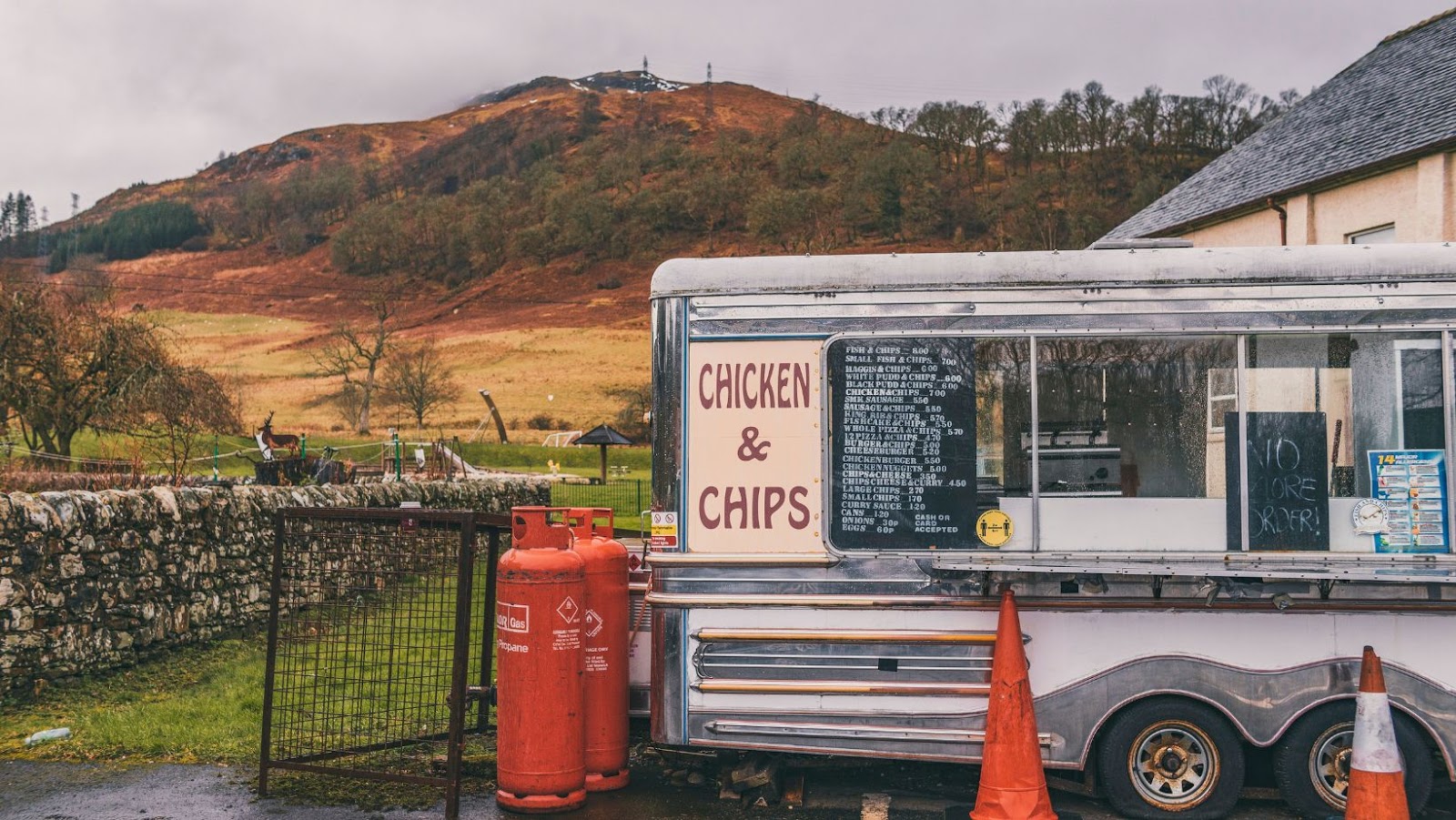Decide on The Type of Food Cart You Want to Build

If you are planning to build a food cart, the first step is to decide on the type of cart you want to build, as it will impact the materials and design needed for construction.
Here are some common types of food carts to consider:
– Hot dog carts: These carts usually have a single compartment for grilling and serving hot dogs, sausages, and other simple snacks.
– Food concession trailers: If you plan to offer a wide variety of foods, a trailer with a larger kitchen space and more equipment may be needed.
– Coffee carts: These carts typically have a small countertop, sink, and storage for coffee, cups, and other supplies.
– Ice cream carts: These carts usually have a freezer compartment for storing and serving ice cream.
Once you have decided on the type of cart you want to build, research the local regulations and construction requirements for food carts in your area.
How to Build a Food Cart
When it comes to building a food cart, one of the main decisions to make is whether to go for a mobile or stationary food cart. A mobile food cart is one that can easily be towed and moved for various locations, while a stationary food cart is likely to be fixed in one place. Each type of cart has their own pros and cons, so let’s look at these in more detail.
Pros and Cons of a Mobile Food Cart
When it comes to food carts, there are pros and cons to choosing a mobile model versus a stationary one.
Pros of a Mobile Food Cart:
- Mobility: With a mobile food cart, you can bring your business to different locations, attend various events and even try new markets. It provides you with the flexibility to go where the customers are, and you can change your location based on demand.
- Low Overhead Cost: With a mobile food cart, you typically have a lower overhead cost; there’s no rent or utility bills to worry about. It is also an excellent way to test a new product or a new location.
Cons of a Mobile Food Cart:
- Permits and Regulations: It can be more challenging to get permits and comply with regulations because it requires obtaining permits for every county or town you plan to serve food in.
- Seasonal Challenges: Depending on your region’s climate, mobile food carts could be only available during the fair weather months, while the winter months can be challenging for mobile carts.
Pros of a Stationary Food Cart:
- Consistency: Establishing your business in a fixed location provides your customers with continuity, and a sense of the familiarity that goes with it.
- Operational Ease: Since everything is stationary, it is easier to store and manage supplies, and it requires less time to transport goods.
Cons of a Stationary Food Cart:
- Requires a devoted location: Stationary food carts have their location that customers come to, so it’s crucial to attract everyday foot traffic to your location.
- Higher Overhead cost: A stationary food cart requires you to pay rent, utilities, and other bills. These costs can have a considerable bearing on the overall profitability of the business.
Overall, both stationary and mobile food carts have unique advantages and disadvantages that business owners must consider before committing to either model.
Pros and Cons of a Stationary Food Cart
When deciding between a stationary food cart and a mobile food cart, there are several pros and cons to consider.
Pros of a Stationary Food Cart:
- You can establish a regular customer base in a specific location which will give stability to your business.
- Lower initial investment and operating costs as compared to a mobile cart.
- You can set up your cart in a covered area, which provides protection from weather conditions.
Cons of a Stationary Food Cart:
- Limited customer reach, as you can’t move your cart to different locations.
- Dependence on the local community for generating business.
- Operating restrictions and zoning laws of the area can limit the size and setup of your cart.
While deciding between a mobile and stationary food cart, evaluate the above-listed points, and consider which option best suits your business strategy and financial goals.
Factors to Consider When Choosing Between Mobile vs Stationary Food Cart
When deciding between a mobile or stationary food cart, there are several factors to consider, each with its own advantages and disadvantages.
Mobility: A mobile food cart allows you to move around and reach more customers in different areas. They also require less space for parking and storage. However, mobility can have limitations in terms of power access and regulations regarding where and when you can operate it.
Space: A stationary cart provides the advantage of more storage space, larger cooking equipment, and permanent electrical and plumbing connections. They are also less complicated to set up and operate. However, stationary carts are limited to one location and can be affected by weather conditions.
Permits and Regulations: Make sure to research the permits and regulations in your area for both mobile and stationary carts. Each type of food cart may require different licenses and certifications to operate.
Budget: Your budget will determine the type of cart you can afford, as mobile carts tend to be more expensive due to the inclusion of wheels and other necessary components. Stationary carts may be more affordable but may require additional costs for rental space.
Overall, it is important to consider your individual needs and business goals when deciding which type of food cart to build.
Design and Build Your Food Cart
The first step in building a successful food cart is to decide on the type of food cart you want to build. Depending on your budget, location and the type of food you want to serve, there are many variations of food carts available for you to choose from.
Whether you want a traditional four-wheeled food cart, or a more modern mobile kitchen, understanding the difference between the two can help you make the right decision.
Design Considerations for a Food Cart
When it comes to designing and building your own food cart, deciding on the type of cart you want to build is a crucial step.
Here are some factors to consider when choosing the type of food cart you want to design and build:
Type of Food: Consider the type of food you plan to sell from your food cart, as this will determine the size, layout, and features of your cart.
Mobility: Determine how mobile you need your cart to be. Do you plan on towing it with a vehicle or pushing it by hand?
Size: Food carts come in a variety of sizes. Consider your space needs, the size of your team, and the volume of food you’ll be producing each day.
Power source: Determine whether you need an electrical or gas-powered cart to meet your food production needs.

Storage: Think about the amount of storage space you’ll need for your food inventory and supplies.
Remember, the type of food cart you choose will impact the design and building process, so choose wisely.
Pro Tip: It’s essential to check with your local government to ensure your cart meets all codes and regulations before starting the designing and building process.
Required Materials for Building a Food Cart
Before building a food cart, it’s important to gather all the necessary materials and equipment to ensure a successful and efficient build. Here are some essential components you’ll need:
A sturdy trailer or cart base that meets local regulations and requirements, a durable frame made from metal or wood, a locking hitch to secure the cart while it’s in use, high-quality wheels and tires to support the weight of the cart and equipment, a sink and water system for cleaning and sanitizing, a power source such as a generator or battery system, cooking equipment such as a grill, hot plates or fryers, refrigeration to keep food fresh, storage space for supplies and ingredients, lighting for night-time operation, and signage to advertise your business and menu.
Once you have assembled all the necessary equipment, it’s time to decide on the type of food cart you want to build and how to optimize your space for your specific cooking and serving needs.
Tools Needed for Building a Food Cart
If you are looking to build your own food cart, you will need a few essential tools to get started.
Here are some of the tools you will need:
- Measuring tape: Essential for accurate measurements of your materials.
- Circular saw: This power tool is used to cut large sheets of plywood or any other lumber.
- Drill: You will need a drill to create holes for screws and bolts.
- Jigsaw: A jigsaw can be used for making intricate cuts and curves.
- Speed square: This tool will help you make precise cuts at a perfect 90-degree angle.
- Screwdriver: You can’t build a food cart without screws and bolts, and a screwdriver is essential to tighten them.
Pro tip: Always wear safety goggles and ear protection when using power tools. It is important to also have a well-ventilated workspace.
Making Your Food Cart Legal
Starting a food cart business is a great way to create your own small business while providing delicious food to potential customers. However, part of the process is making sure that you make your food cart legal. Depending on where you plan to start your food cart, there may be a few regulations you need to consider before you start building.
In this article, we’ll discuss some of the steps you’ll need to take to get your food cart legalized.
Permits and Licenses Required for a Food Cart
Before building a food cart, it is essential to understand the permits and licenses required to make it legal. The requirements vary from state to state, and compliance is necessary for every vendor to operate.
Here are some permits and licenses you might need:
Food Service Establishment Permit: This permit is necessary to operate any food service establishment.
Business License: Before starting a business, you must obtain a business license.
Food Handler’s Permit: This permit is mandatory for every employee who handles food.
Health Department Permit: This permit ensures that your food cart has passed inspection by the health department.
Mobile Food Vending License: This license allows you to operate a food cart in a specific area or location.
Before building your food cart, you must understand and secure all necessary permits and licenses. Research the regulations in your area and contact the relevant authorities for guidance. Pro Tip: A legal food cart will help you avoid fines, penalties, and shutdowns.
Health and Safety Requirements for a Food Cart
Before starting a food cart business, it is crucial to ensure that you meet all health and safety requirements to operate legally. This includes choosing the right type of food cart and building it according to code.
Here are the steps to follow:
Decide on the type of food cart you want to build, such as a towable cart or a trailer.
Research local health and safety regulations to ensure that your food cart meets all requirements, such as proper ventilation and hand-washing stations.
Build your food cart according to code, using durable and easy-to-clean materials and ensuring that all equipment is safely secured.
Obtain all necessary permits and licenses from local authorities before opening for business.
Regularly maintain and clean your food cart to prevent foodborne illnesses and ensure continued compliance with health and safety regulations.
Insurance Requirements for a Food Cart
If you are planning to start a food cart business, it is crucial to obtain the necessary insurance coverage to protect yourself and your investment from potential risks and liabilities.
Here are some insurance requirements for a food cart:
General Liability Insurance: This insurance policy protects against lawsuits due to bodily injury, property damage, or advertising injury caused by your food cart operations.
Commercial Auto Insurance: If your food cart is motorized, commercial auto insurance is a must to cover accidents and damages caused by the vehicle.
Property Insurance: This coverage protects against damage or loss of your food cart, equipment, inventory, or supplies.
Worker’s Compensation Insurance: If you have employees, this policy provides coverage for medical expenses and lost wages due to work-related injuries or illnesses.
When it comes to building a food cart, decide on the type of cart you want to build based on your budget, mobility needs, and equipment requirements. Pro tip: Research your local government’s regulations and obtain the necessary permits before building your cart.
Marketing and Promoting Your Food Cart
Once you have decided on the type of food cart you want to build, it’s time to start marketing and promoting it. This can be done through online methods like social media, creating a website, and using search engine optimization (SEO), or through offline methods like networking, promotions, and flyers.

Let’s look at the pros and cons of each of these methods for marketing and promoting your food cart.
Creating a Brand and Logo for Your Food Cart
Before you can market and promote your food cart, you need to create a brand and logo that will attract potential customers. Here are some steps to help you with creating a brand and logo for your food cart:
1. Decide on the type of food that you will be selling and develop a brand identity accordingly.
2. Choose a name that reflects the kind of food you’re serving and that is easy for customers to remember.
3. Design a logo that is unique, eye-catching, and memorable. Consider using colors and images that are associated with the type of food you’re serving.
4. Make sure your logo is legible and readable from a distance, as well as scalable to different sizes.
Once your branding and logo design are ready, you can start marketing and promoting your food cart through social media, flyers, and other forms of advertising. Don’t forget to highlight the unique selling points of your food, such as its quality, affordability, or distinct flavor.
Developing a Marketing Strategy for Your Food Cart
Deciding on the type of food cart you want to build is an important first step in developing a marketing strategy for your food cart.
Here are some tips to help you decide on the type of food cart to build:
Consider your target audience: Think about the demographic you are trying to target and what type of food they would be most interested in.
Research your competition: See what kind of food carts are already in the area and what types of food they offer. This will give you an idea of what is popular and what is missing in the market.
Determine your niche: Choose a type of cuisine or food item that sets you apart from the competition and appeals to your target audience.
Once you have decided on the type of food cart you want to build, you can then start developing your marketing strategy to promote your unique food offering to your target customers.
Using Social Media to Promote Your Food Cart
Using social media is an excellent way to promote and market your food cart business. Before strategizing your social media marketing, consider which type of food cart you want to build and build it in the most appealing and functional way for your business. There are several types of food carts available, and each serves a different purpose.
Here are some of the popular types of food carts you can consider for building your food cart:
- Concession trailers: These are mobile kitchens on wheels, which can be towed by a car or truck.
- Food carts: These are small-sized trailers that can be pulled by a bicycle, a scooter, or a small truck.
- Food trucks: These are custom-built vehicles that offer more space and mobility than food carts.
Once you have decided on the type of food cart you want to build, you can use social media platforms like Instagram, Twitter, and Facebook to market and promote your business to a broader audience. Remember to use high-quality photos, creative captions, and interactive posts to engage your followers and customers. Pro Tip: Conduct a social media poll to know your customers’ preferences and tailor your menu accordingly.
Operating Your Food Cart Business
Operating a food cart business is a great opportunity to make money and bring joy to customers. It requires a lot of thought and preparation in order to make sure your food cart is up to code in terms of health regulations and laws in your local area.
Before you can start operating your food cart, you’ll need to choose what type of food cart you’d like to build. There are various types of food carts to choose from.
Setting Up Your Food Cart at a Location
Before setting up your food cart at a location, you need to decide on the type of food cart you want to build. Here are the steps to help you get started with building a food cart for your business:
Determine the type of cuisine you want to serve, which will influence the design and equipment needs of the cart.
Develop a detailed plan for your food cart, including the type of materials and equipment required, a floor plan, and a list of necessary permits and licenses.
Work on the layout and design of your food cart, keeping in mind the ergonomics and functionality of the cart.
Source for materials and equipment needed for the construction of your food cart.
Acquire necessary permits and approvals before starting work on your food cart.
Once construction is complete, test all equipment and systems to ensure the cart is fully operational, then begin setting it up at suitable locations for your target market.
Pro Tip: Ensure that you have all the necessary paperwork and permits in order to avoid legal issues, this is important for starting any food business.
Managing Inventory and Supplies for Your Food Cart
Deciding on the type of food cart you want to build is a crucial first step in managing inventory and supplies for your food cart business. Whether you’re planning to sell hot dogs, tacos, coffee, or smoothies, you need to tailor your inventory and supplies to the specific items you’ll be serving.
Here are some key considerations when building your food cart:
- First and foremost, you need to decide on the type of food you want to serve and the equipment and tools required to prepare it. This will determine the size and layout of your cart, as well as the inventory and supplies you need.
- Think about the space and storage options on your cart. You want to make the most of the limited space available while also ensuring all of your supplies are easily accessible and organized.
- Consider your menu items and how to properly store ingredients and supplies to maintain freshness and quality.
Taking the time to plan and organize your inventory and supplies will help your food cart business run smoothly and efficiently.
Hiring and Training Employees, if Necessary
Before you can operate your food cart business, you need to decide on the type of food cart you want to build and hire and train employees if needed. Here are some tips for building your food cart:
1. Choose a design: Select a design that suits your brand image and food service needs. It must also comply with safety and sanitation regulations.
2. Acquire the necessary equipment: Stock up on necessary equipment like burners, griddles, refrigerators, and so on. Choose lightweight equipment that is durable and easy to clean.
3. Install electrical and plumbing systems: Hire a licensed electrician and plumber to install your cart’s electrical and plumbing systems. Ensure that it complies with safety standards.
4. Permits and Licenses: Obtain city permits and licenses before starting your food cart business.
5. Hiring and Training Employees: If needed, hire and train employees for food prep, customer service, and cashier duties.
Pro Tip: Invest in high-quality equipment as it can make a significant difference in the efficiency and productivity of your food cart business.

 The Benefits Of Outdoor Sofa Deep Seating
The Benefits Of Outdoor Sofa Deep Seating  This Method has Been Used for Centuries
This Method has Been Used for Centuries  The Different Types of Bonds
The Different Types of Bonds  Solar Panel Cost And Efficiency
Solar Panel Cost And Efficiency  The Most Comfortable Deep Seating Outdoor Furniture
The Most Comfortable Deep Seating Outdoor Furniture  Maintaining Your Glass Cabinet Doors
Maintaining Your Glass Cabinet Doors